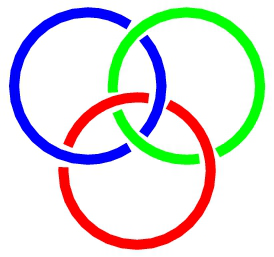Orateur
Dr
Arnoldas Deltuva
(Centro de F ́ısica Nuclear, University of Lisbon, Portugal)
Description
There is a long history of theoretical prescriptions for the solution of the Coulomb problem
in three-nucleon continuum. Most of them employ configuration-space framework [1, 2, 3]. In
contrast, we solve momentum-space integral equations. The method we use for the inclusion
of the Coulomb interaction is based on the ideas proposed in Ref. [4] for two charged particle
scattering and extended in Ref. [5] for three-particle scattering, but differs significantly from
those earlier works in the practical realization. The Coulomb potential is screened, standard
scattering theory for short-range potentials is used, and the renormalization procedure is applied
to recover the unscreened limit. In our method [6] the Coulomb potential is screened in a novel
way that allows successful application of the numerical techniques developed previously for
solving three-nucleon equations without Coulomb and avoids approximations on the nuclear
interaction and the treatment of screened Coulomb used in Ref. [5]. The outcome of our method
are fully converged calculations for observables of proton-deuteron (pd) elastic scattering and
breakup, pd radiative capture, and electromagnetic disintegration of 3 He nuclei; the results for
pd elastic scattering agree well with the ones obtained using configuration-space techniques [7].
The method has been extended successfully to four-nucleon scattering [8] and to three-body
nuclear reactions [9, 10] involving 4 He, 11 Be or 12 C nuclei.
References
[1] A. Kievsky, M. Viviani, and S. Rosati, Phys. Rev. C 64, 024002 (2001).
[2] C. R. Chen, J. L. Friar, and G. L. Payne, Few-Body Syst. 31, 13 (2001).
[3] S. Ishikawa, Few-Body Syst. 32, 229 (2003).
[4] J. R. Taylor, Nuovo Cimento B23, 313 (1974); M. D. Semon and J. R. Taylor, ibid. A26, 48 (1975).
[5] E. O. Alt et al., Phys. Rev. C 65, 064613 (2002).
[6] A. Deltuva, A. C. Fonseca, and P. U. Sauer, Phys. Rev. C 71, 054005 (2005); 72, 054004 (2005).
[7] A. Deltuva et al., Phys. Rev. C 71, 064003 (2005).
[8] A. Deltuva and A. C. Fonseca, Phys. Rev. Lett. 98, 162502 (2007); Phys. Rev. C 76, 021001(R)
(2007).
[9] A. Deltuva, Phys. Rev. C 74, 064001 (2006).
[10] A. Deltuva et al., Phys. Rev. C 76, 064602 (2007).
References
[1] G. M. Bruun, A. D. Jackson, and E. E. Kolomeitsev, Phys. Rev. A, 71 052713.
[2] P. Massignan, G. M. Bruun, and H. T. C. Stoof, arXiv:0805.3667.
Auteur principal
Dr
Arnoldas Deltuva
(Centro de F ́ısica Nuclear, University of Lisbon, Portugal)

